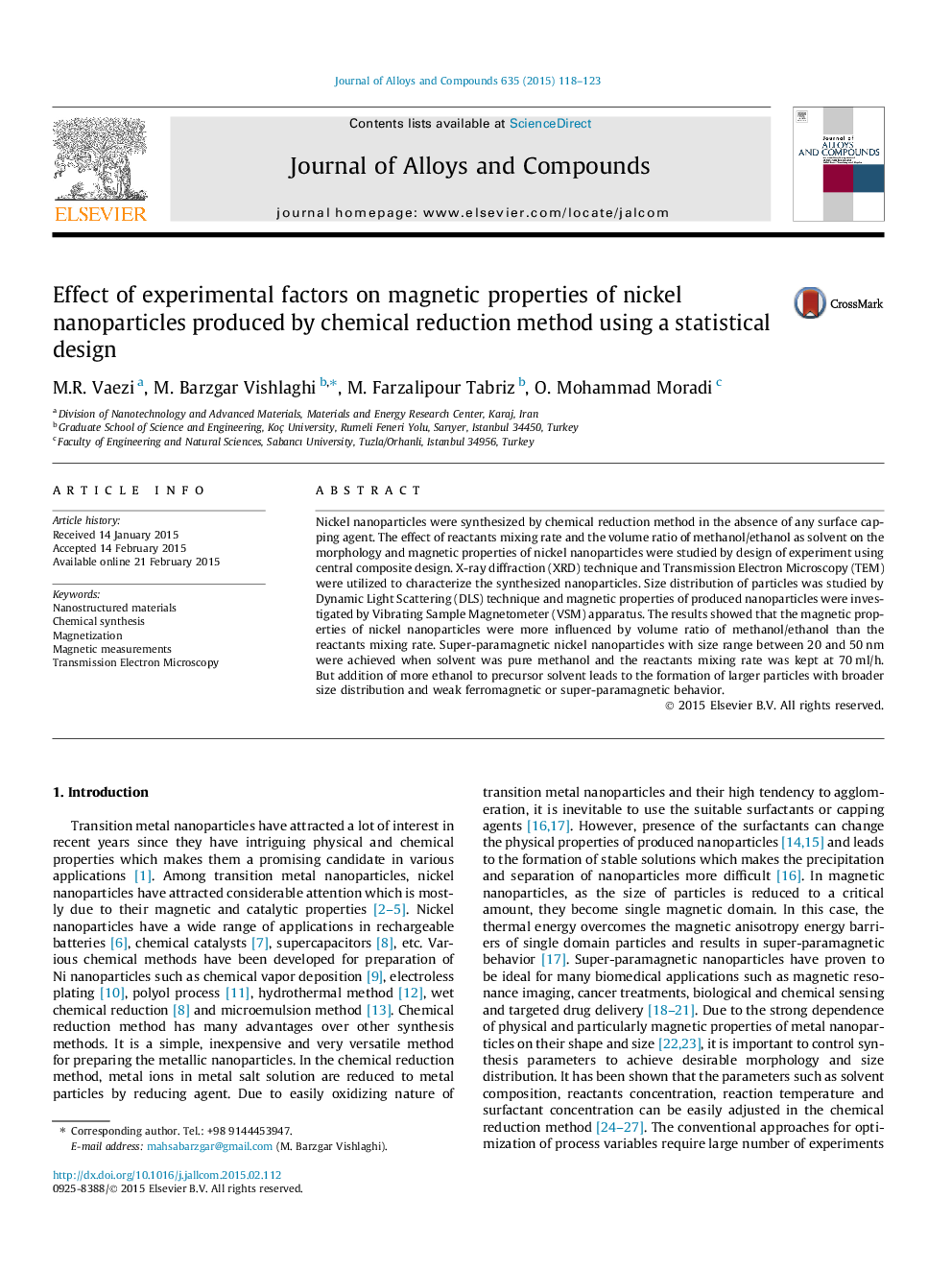| Article ID | Journal | Published Year | Pages | File Type |
|---|---|---|---|---|
| 1609143 | Journal of Alloys and Compounds | 2015 | 6 Pages |
•Superparamagnetic nickel nanoparticles are synthesized by wet chemical reduction.•Effects of synthesis parameters on magnetic properties are studied.•Central composite experimental design is used for building an empirical model.•Solvents ratio was more influential than reactants mixing rate.
Nickel nanoparticles were synthesized by chemical reduction method in the absence of any surface capping agent. The effect of reactants mixing rate and the volume ratio of methanol/ethanol as solvent on the morphology and magnetic properties of nickel nanoparticles were studied by design of experiment using central composite design. X-ray diffraction (XRD) technique and Transmission Electron Microscopy (TEM) were utilized to characterize the synthesized nanoparticles. Size distribution of particles was studied by Dynamic Light Scattering (DLS) technique and magnetic properties of produced nanoparticles were investigated by Vibrating Sample Magnetometer (VSM) apparatus. The results showed that the magnetic properties of nickel nanoparticles were more influenced by volume ratio of methanol/ethanol than the reactants mixing rate. Super-paramagnetic nickel nanoparticles with size range between 20 and 50 nm were achieved when solvent was pure methanol and the reactants mixing rate was kept at 70 ml/h. But addition of more ethanol to precursor solvent leads to the formation of larger particles with broader size distribution and weak ferromagnetic or super-paramagnetic behavior.
